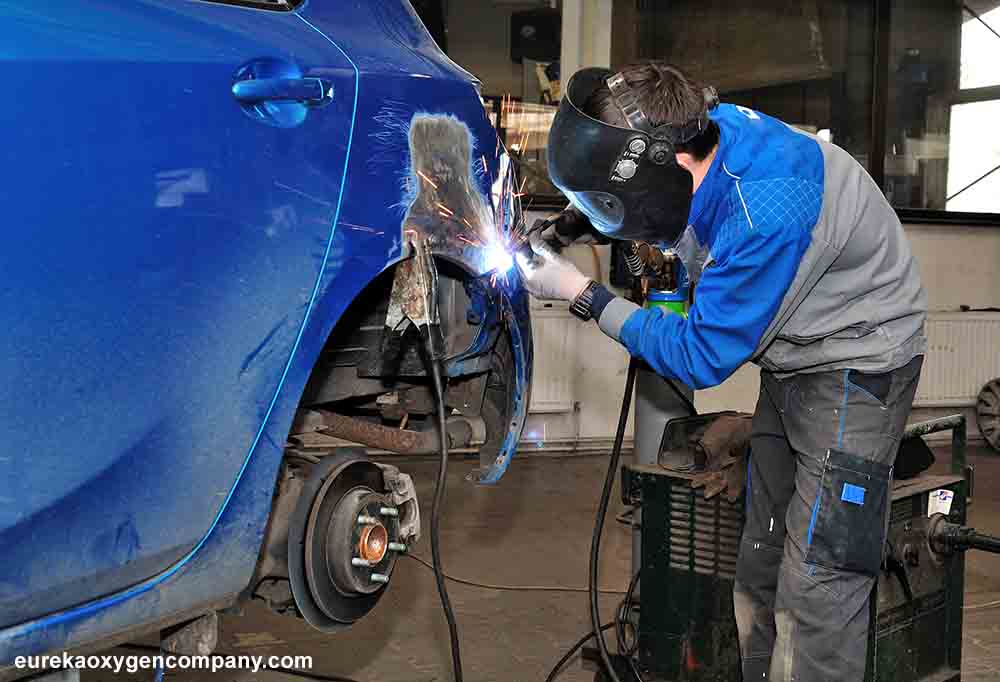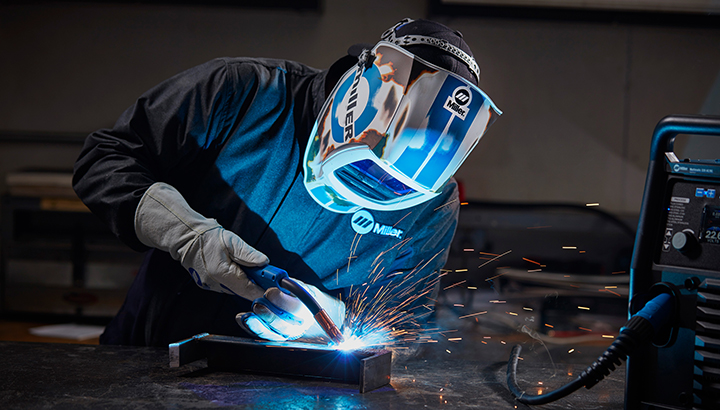Typical Welding Repair Issues and Just How to Address Them Properly
Welding repair services usually run into a variety of issues that can endanger the honesty of the end product. Usual issues include insufficient penetration, porosity, and misalignment, to name a few. Each problem presents distinct difficulties that require specific methods for resolution. Comprehending these problems is necessary for welders intending to enhance their skills and end results. This conversation will explore these common welding repair service issues and effective techniques to address them.
Inadequate Infiltration
Poor infiltration occurs when the weld metal stops working to completely fuse with the base product, causing weak joints and potential architectural failings. This concern frequently originates from not enough warm input, inaccurate electrode angle, or improper welding speed. Welders may encounter poor penetration because of a mistake of the necessary parameters for a certain material density or type. Additionally, contamination on the base material's surface area can prevent efficient bonding, aggravating the issue. To address inadequate penetration, welders should ensure appropriate setups on their devices and maintain a clean job surface area. Regular evaluation of welds is advised to identify any deficiencies early, permitting prompt corrections and the avoidance of jeopardized structural honesty in welded assemblies.
Porosity
Porosity is a typical defect in bonded joints that materializes as tiny gas bubbles caught within the weld steel. This defect can compromise the honesty of the weld, causing reduced toughness and prospective failing under anxiety. Fabrication. Porosity usually occurs from contamination, dampness, or improper welding techniques, which enable gases to escape right into the liquified weld swimming pool. To resolve porosity, welders must assure appropriate surface area preparation, keep a clean functioning atmosphere, and use appropriate welding specifications. Furthermore, choosing the appropriate filler material and protecting gas can mitigate gas entrapment. Routine assessment and testing of welds can assist recognize porosity early, ensuring timely rehabilitative actions are taken, thus maintaining the high quality and integrity of the welded framework
Imbalance
Misalignment in welding can arise from different variables, including inappropriate setup and thermal expansion. Understanding the origin causes is important for efficient resolution. A number of correction strategies are offered to realign elements and guarantee architectural honesty.
Root causes of Misalignment
Welding imbalance commonly comes from a range of underlying problems that can jeopardize architectural honesty. One main cause is incorrect fit-up of elements prior to welding, which can lead to spaces and irregular surface areas. Variations in thermal growth throughout the welding procedure can also lead to distortion, especially if the products being joined have various coefficients of expansion. Additionally, insufficient clamping and fixturing may stop working to hold parts safely in position, leading to motion during welding. Poorly conserved tools, including welding devices and devices, may introduce disparities in the weld grain, additional adding to misalignment. Operator mistake, stemming from insufficient training or experience, can likewise play a significant function in developing misaligned welds.

Correction Techniques Readily Available
Addressing misalignment properly needs a combination of rehabilitative strategies tailored to the specific issues at hand. One usual approach is using components or jigs to hold components in the right position throughout welding, ensuring consistent positioning. Furthermore, pre-heating the materials can help in reducing distortion and boost fit-up. For considerable imbalance, mechanical adjustment strategies, such as using hydraulic jacks or clamps, can be employed to fix the setting before welding. Post-weld heat treatment might additionally be necessary to ease stresses triggered by imbalance. Careful assessment and modification throughout the configuration phase can protect against imbalance problems from becoming considerable troubles, advertising a smoother welding procedure and boosting general structural integrity.
Distortion
Distortion is a common difficulty in welding that can emerge from various aspects, including uneven cooling and heating. Comprehending the reasons for distortion is necessary for executing effective prevention techniques. Addressing this issue not only improves structural integrity however additionally improves the general high quality of the weld.
Sources of Distortion
When based on the extreme heat of welding, materials typically go through modifications that can bring about distortion. This sensation largely occurs from thermal development and tightening during the welding process. As the weld location warms up, the product expands; upon cooling, it gets, which can produce inner tensions. Additionally, irregular home heating throughout a work surface can intensify these anxieties, resulting in bending or bending. The type of material additionally plays a substantial role; metals with varying thermal conductivity and coefficients of growth may respond in a different way, leading to unforeseeable distortions. Bad joint style and insufficient fixturing can add to imbalance throughout welding, raising the likelihood of distortion. Understanding these reasons is vital for efficient welding repair work and prevention strategies.
Prevention Techniques
Efficient avoidance strategies for distortion throughout welding focus on regulating warm input and guaranteeing correct joint design. Maintaining a constant warm input aids to decrease thermal growth and tightening, why not try here which can result in distortion. Using strategies such as pre-heating the work surface can likewise decrease the temperature gradient, promoting uniform home heating. Furthermore, choosing appropriate joint layouts, such as T-joints or lap joints, can improve security and minimize stress and anxiety concentrations. Implementing proper fixturing to safeguard the workpieces in position better aids in preserving placement throughout the welding procedure. Staggered welding series can disperse warm extra uniformly, stopping localized distortion. By using these methods, welders can considerably reduce the likelihood of distortion and improve the general high quality of their welds.
Splitting
Breaking is a common issue combo welder encountered in welding repair work, frequently resulting from various aspects such as improper air conditioning prices, product selection, or insufficient joint prep work. The occurrence of cracks can significantly compromise the integrity of the weld, bring about potential failings throughout procedure. To resolve this concern, welders should initially analyze the source, making sure that products are suitable and appropriately chosen for the certain application. Additionally, managing the air conditioning price during the welding process is essential; fast cooling can generate stress and anxiety and cause breaking. Proper joint style and preparation also contribute to minimizing the threat. Applying these techniques can enhance weld high quality and resilience, eventually reducing the probability of splitting in finished weldments.

Insufficient Combination
A substantial problem in welding repairs is incomplete blend, which happens when the weld metal does not sufficiently bond with the base material or previous weld passes - Montana Mobile Welding and Repair Belgrade Welding. This problem can result in weak points in the joint, possibly endangering the stability of the welded framework. Variables adding to incomplete blend include not enough heat input, improper welding method, and contamination of the surface areas being signed up with. To resolve this problem successfully, welders should ensure correct pre-weld cleansing and surface area prep work, in addition to adjust their welding parameters to attain appropriate infiltration and blend. Regular examination during the welding procedure can likewise assist determine insufficient combination early, permitting timely corrective steps to improve the general quality of the weld
Overheating
While welding repair work can improve architectural honesty, overheating provides a substantial obstacle that can cause product deterioration. Too much warmth throughout welding can change the mechanical homes of steels, resulting in reduced stamina, increased brittleness, and bending. This sensation is specifically essential in high-stress applications where architectural dependability is extremely important. Identifying overheating can involve visual examinations for staining or distortion, in addition to keeping track of temperature level throughout the welding process. To alleviate our website the dangers linked with getting too hot, welders must utilize appropriate techniques, such as controlling warm input, changing travel speed, and using appropriate filler materials. In addition, executing pre- and post-weld warmth therapies can aid restore product homes and improve the general high quality of the fixing, guaranteeing long-lasting performance and safety.
Often Asked Questions
What Are the Typical Indications of a Welding Issue?

How Can I Test My Welds for Top quality?
To test welds for high quality, one can utilize aesthetic examinations, ultrasonic testing, and radiographic approaches. Each strategy ensures structural stability, identifies defects, and confirms adherence to specified requirements, ultimately boosting the integrity of the bonded joints.
What Safety Preventative Measures Should I Take While Welding?
When welding, one need to prioritize safety and security by using suitable personal protective tools, ensuring appropriate ventilation, securing combustible products away, keeping a clean office, and knowing surroundings to avoid mishaps and injuries.
Can I Repair a Weld Without Renovating the Entire Joint?
Repairing a weld without renovating the whole joint is possible, depending upon the damage (Montana Mobile Welding and Repair Belgrade Welding). Methods such as grinding, adding filler material, or making use of a welding procedure can successfully attend to particular defects while protecting the bordering structure
What Equipment Are Important for Efficient Welding Repair Works?
Important devices for reliable welding repairs consist of a welding maker, wire brush, grinder, protective gear, clamps, and filler materials. Each tool plays an essential duty in guaranteeing quality and safety throughout the repair work procedure. Porosity typically emerges from contamination, dampness, or inappropriate welding strategies, which allow gases to leave right into the liquified weld swimming pool. Improperly kept tools, including welding makers and devices, might present variances in the weld grain, additional adding to misalignment. When subjected to the intense warm of welding, products typically undergo adjustments that can lead to distortion. Breaking is a common concern run into in welding fixings, commonly resulting from various variables such as improper air conditioning rates, material selection, or poor joint prep work. A substantial issue in welding repairs is incomplete fusion, which occurs when the weld metal does not properly bond with the base material or previous weld passes.